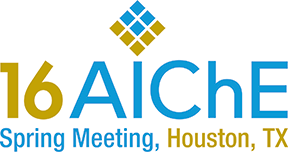

Description
This paper will present a practical application of a design process for developing and implementing effective process safety management (PSM) systems. Management system failures, or deficiencies, are often the root causes leading to incidents. Such failures can be attributed to inadequately designed management systems, primarily since standards and regulations do not provide detailed specifications for their design. A methodology based on proven quality management principles will demonstrate how organizational and human factors can be incorporated into the design specification for a PSM system to ensure effectiveness and deliver risk reduction performance.
Application
Applicable to both onshore (e.g. OSHA PSM, EPA RMP) and offshore (e.g. BSSE SEMS), this design methodology takes process safety beyond regulatory compliance and enables organizations to sustain performance for managing risk, reliability and resilience as part of an integrated operational risk management framework.
This design methodology applies to both new and modified designs for assets and facilities, as well as individual management processes. Application of organizational and human factors into the management system design also allows for continual improvement (Plan-Do-Check-Act life cycle) in response to changes to regulations, technology and operating practice.
Results, Observations, Conclusions
Results will show a practical step-by-step procedure on “how to” incorporate organizational and human factors into the PSM system design, including: management and leadership, safety culture, human factors engineering and human-machine interfaces, employee engagement and empowerment, communication, etc. Examples will show how quality aspects for organizational and human factors are addressed in key processes such as hazard analysis and risk assessment (e.g. inherent safety), operating procedures (e.g. human reliability), training (e.g. competence), and mechanical integrity (e.g. dependability), contractor management (e.g. organizational effectiveness of interfaces, decisions, and communications), and people-based asset management (e.g. ownership).
Significance of Subject Matter
This paper will demonstrate that proven quality principles derived from internationally recognized management system standards can have a dramatic impact on how individual management processes can be used to ensure that design, operational and maintenance activities are conducted in a safe and environmentally responsible manner. Accordingly, designing organizational and human factors directly into the PSM system processes provides a best practice for the sustainable and effective reduction of risks of incidents and a cost-effective means to achieve these goals.
This paper will draw upon the authors’ extensive experience in organizational and human factors and conducting PSM system audits, as well as expertise in designing robust and vibrant systems for managing process safety performance.
